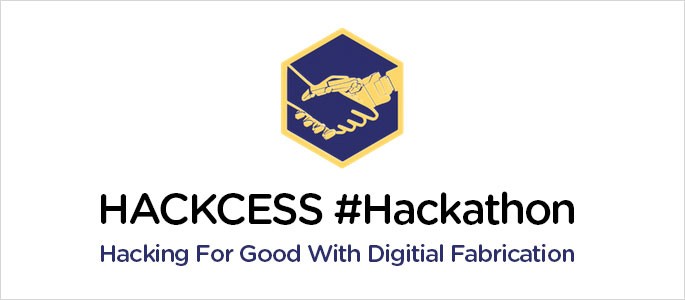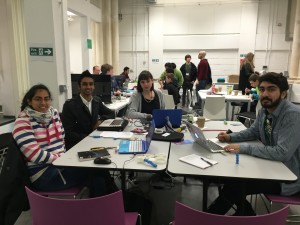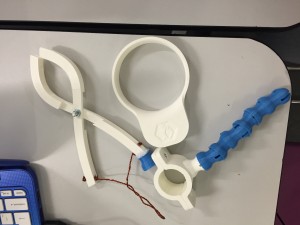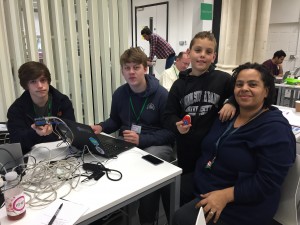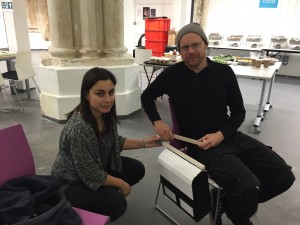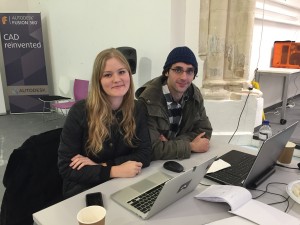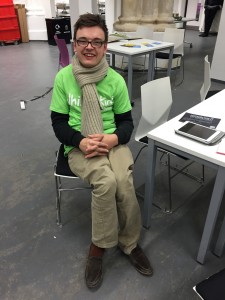
“These 2 days show what can be achieved when you give people the creative freedom and space to come up with ideas for themselves. Within hours we worked together on prototypes and ideas that will improve the lives and independence of young people.
People like me tend to go with the flow and adapt, here I’ve been asked what I need. That’s very empowering.
If you’re not ambitious with what you can achieve, you never push the boundaries. I want young disabled people to be FULLY independent, not just partially.”
– George, Whizz-Kids
“Hacksmiths and Fablab co-organised a disability-centred hackathon. With modern digital fabrication techniques and open source electronic hardware it’s now possible to go from idea to prototype in 12 hours.
Hackcess aims to use this modern phenomenon along with the hacker ethics to create technology for good.
Hacksmiths wants to use its creative approach to help facilitate events like this, that give people the opportunity to learn new exciting skills, build crazy, cool inventions and share their story.”
– Bevis, Hacksmiths president –
This week Degeneration IT had the honour to be present at Hackcess, a hackathon organised by Hacksmiths (Goldsmiths’ Hacking Society) and Fablab, and with the collaboration of Autodesk Fusion 360 and Whizz-Kids.
With the purpose of tackling disability, during the 2 days I’ve seen a lot of ideas going into trying to make somebody’s life easier. The guys from Whizz-Kids offered their suggestions and availability to answer questions and try the products that were being developed, and it was amazing to see how happy they were about seeing so much creativity and collaboration going into something that could potentially change their everyday life. The amazing Fablab (go and look it up if you’re in London) provided several 3D printers and Autodesk was a strong presence to help out using their Fusion 360.
The four winner groups:
1st place: HandyHolder!
HandyHolder is a customisable, modular wheelchair attachment. It has a generic fastener (in order to be compatible with all wheelchairs) and from there you can add different attachments (cupholder, phone/tablet holder, etc…) using embeddable clamps.
If you have access to a 3D printer you can download their design here of fork their GitHub repo.
2nd place: Self-monitoring mood button!
The self-monitoring mood button is a device created in response to one of the problems that most people with Tourette Syndrome or Autism often face: mood control. The device allows the user to discreetly press a button when, for example, feeling too stressed, overwhelmed, distracted or nervous. The button sends a signal to a web portal where graphs are generated considering time and environmental factors like level of noise or temperature. These graphs can then be analysed by the user him/herself or parents, educators or carers, in order to identify triggers or patterns in mood changes.
They used an Arduino for the sensors (with Arduino API) and Fusion 360 for the design.
3rd Place: Adjustable satchel for wheelchair
A satchel that can be attached at the side of the wheelchair and can then swing at the back of it in order to fit through doors and not be obtrusive. A really cool design that allows wheelchair user to carry a lot more stuff (i.e. when buying groceries) without having anything on the way.
4th place: OpenAccessMap!
OpenAccessMap allow users to track their journey on a street and then share accessible path. A lot of similar tools are available online for public places like restaurants, but not much on how to get there. For now just a website, with the chance to become an App. Users generate data using their GPS tracking and their choices of root.
You can fork their GitHub here.
All ideas were amazing though:
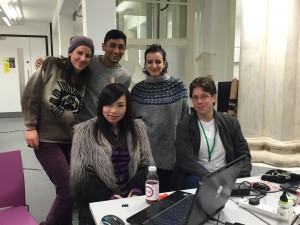
Jing, Suzie, Martina, Brian and Heman created a detachable tray to allow wheelchair user to have a support when other surfaces like tables or desks are not available
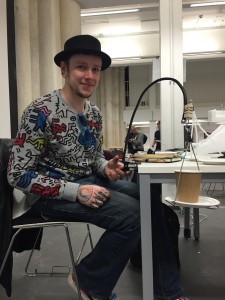
Adam created a swinging, stabilising cup and flute-like glass holder so wheelchair users can drink in social events with out being restricted in mobility.
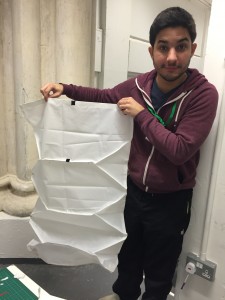
Guillherme and Vahakn (not in picture) created a prototype for a foldable waterproof leg cover, easy to fold and unfold.
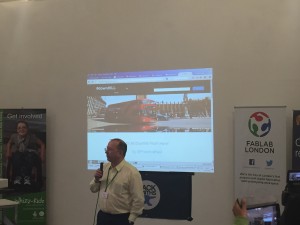
Paul created a prototype for an App that allow wheelchair users to know if a bus stop is on a slope and, in case, what side is downhill or uphill
It has been a fun and creative weekend and it was amazing to see such great collaboration between different people with different skills.
I hope there will be many more Hackcess.
Share this Post

